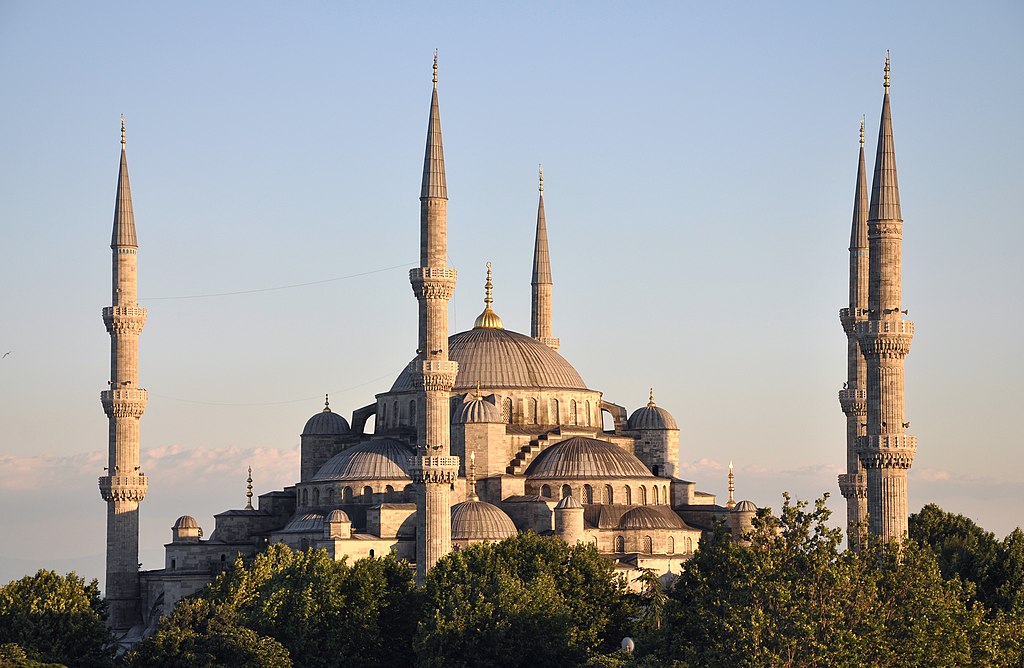Sultanahmet, once the seat of the Byzantine and Ottoman empires, is a living testament to Istanbul’s layered history. Sultanahmet district hosts a constellation of historic landmarks, such as the awe-inspiring Hagia Sophia, the magnificent Blue Mosque, and the grand Topkapi Palace.
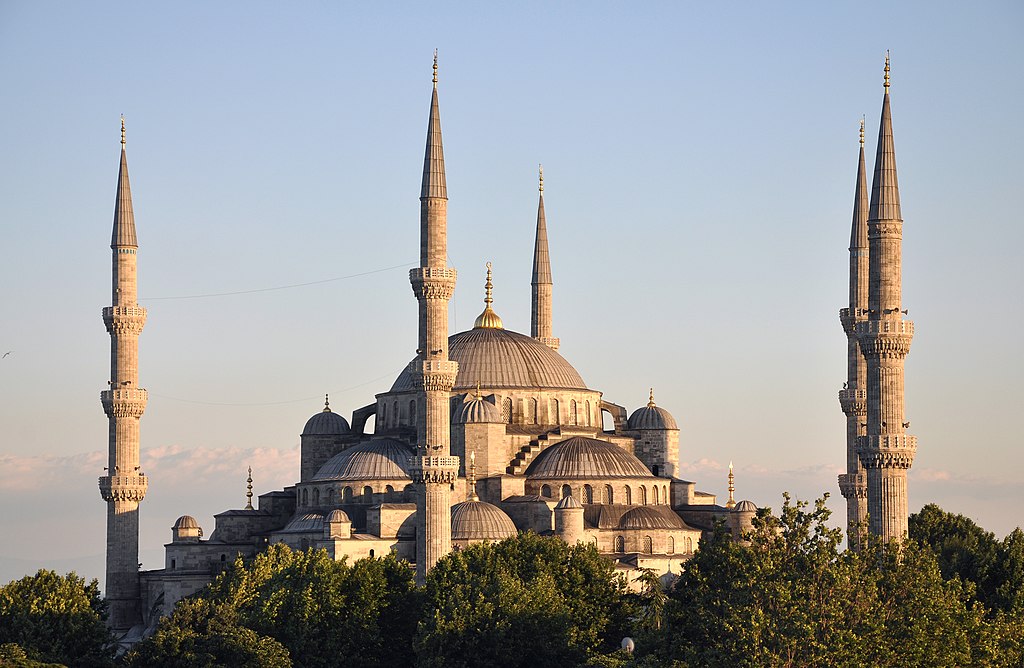
Alongside these, the Basilica Cistern and the ancient Hippodrome stand as proud remnants of a bygone era. Amidst this, the bustle of the Grand Bazaar and the fragrant Spice Bazaar infuse the air with an unmissable vitality. Indeed, Sultanahmet effortlessly melds centuries of history with the vibrant pulse of contemporary Istanbul.
I’ll show you how to spend a day in Istanbul’s Sultanahmet Old City and give a quick rundown on places like the Hagia Sophia and the Blue Mosque.
Note that we have a separate guide for each of the awesome places here that you can check by clicking the links below.
Must Places to See in Sultanahmet
1) Hagia Sophia – The one and only!

The Hagia Sophia, also known as Ayasofya, is a unique cultural landmark in Istanbul. Initially a Byzantine cathedral, it later became an Eastern Orthodox church before being converted into a mosque during Ottoman rule in the 15th century. Since 1935, it has served as a museum, allowing visitors to appreciate its diverse history. In 2020, it was converted back into a mosque.
The architecture of the Hagia Sophia is impressive, with a massive dome and flanking minarets. Its interior showcases a captivating blend of Christian mosaics and Islamic calligraphy, representing its different historical periods. Every corner of the Hagia Sophia tells a distinct story, making it an essential attraction when visiting Istanbul.
Address: Sultan Ahmet, Ayasofya Meydanı, 34122 Fatih/İstanbul
2) Topkapi Palace

Topkapi Palace is another jewel of Istanbul. It was the main residence and administrative headquarters of the Ottoman Sultans during their reign. It is vast, with four main courtyards and many smaller buildings.
You can explore the Harem, where the Sultan’s family lived, the Imperial Treasury, full of dazzling artifacts, and the palace kitchens, which provide a glimpse into the royal lifestyle of the era. Its position on the Seraglio Point offers splendid views over the Golden Horn and the Sea of Marmara. Topkapi Palace is more than just a beautiful building; it’s a journey back in time to the Ottoman era.
3) Hippodrome
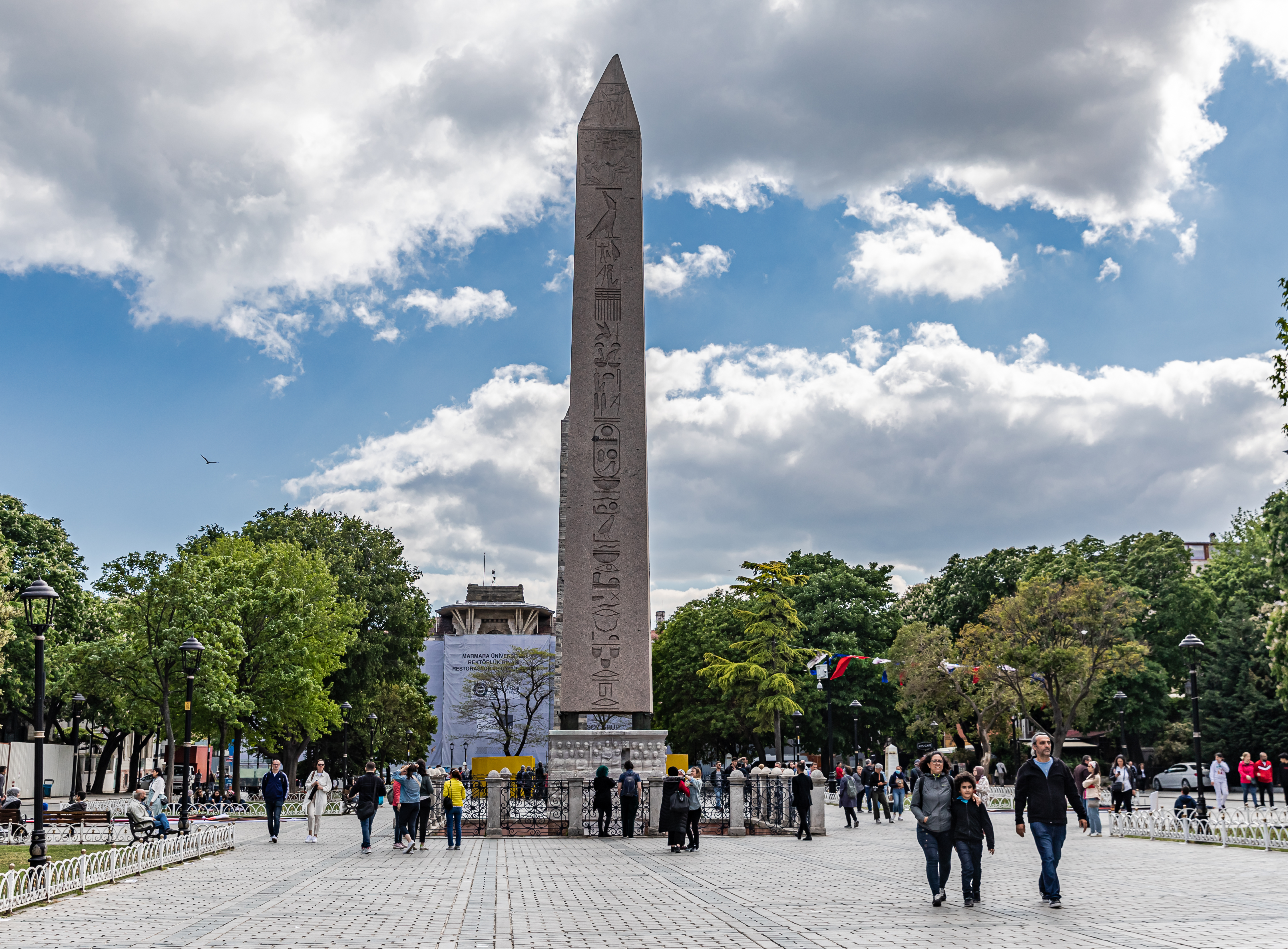
The Hippodrome of Constantinople, now Sultanahmet Square, was the social and entertainment hub of Byzantine Constantinople.
Once a stadium that could accommodate tens of thousands of spectators, it’s now home to three main ancient monuments: the Serpentine Column, the Obelisk of Thutmose III, and the Walled Obelisk. Today, the Hippodrome is a place of peace and relaxation, but these monuments bear witness to its vibrant past.
4) Basilica Cistern (Sultanahmet mosque)
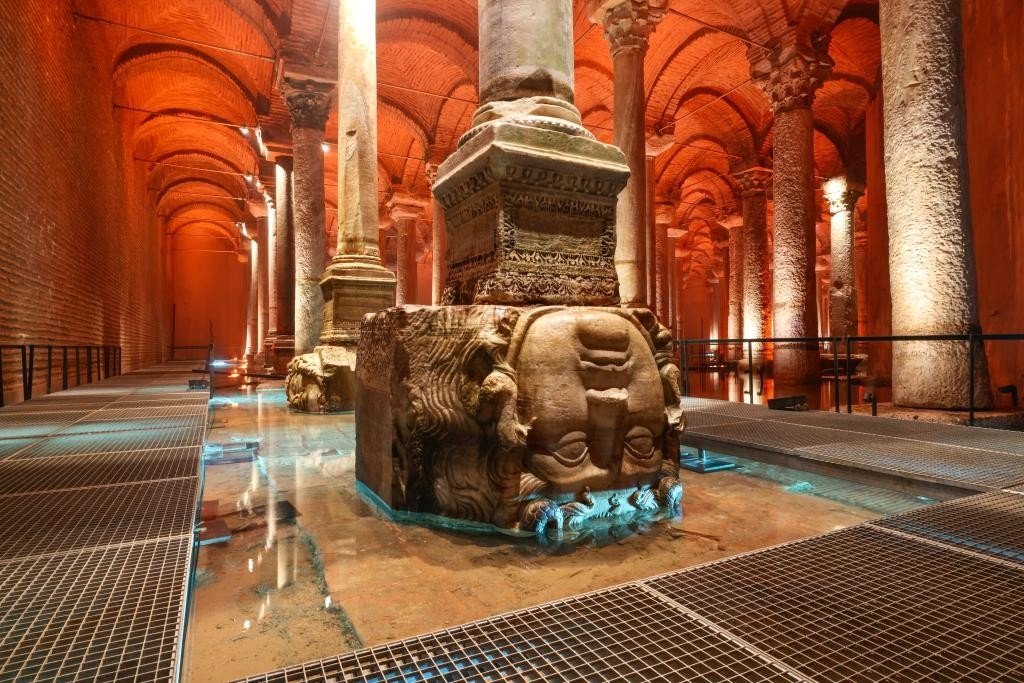
The Basilica Cistern is one of the largest ancient cisterns that lie beneath Istanbul. This subterranean structure, built in the 6th century during the reign of Byzantine Emperor Justinian I, could store 80,000 cubic meters of water. Today, it’s an eerie yet enchanting space with its 336 marble columns, two of which are carved with the head of Medusa. Walking through this mysterious and cool underworld is an intriguing break from the hustle and bustle of the city above.
5) Blue Mosque (Sultanahmet Camii)
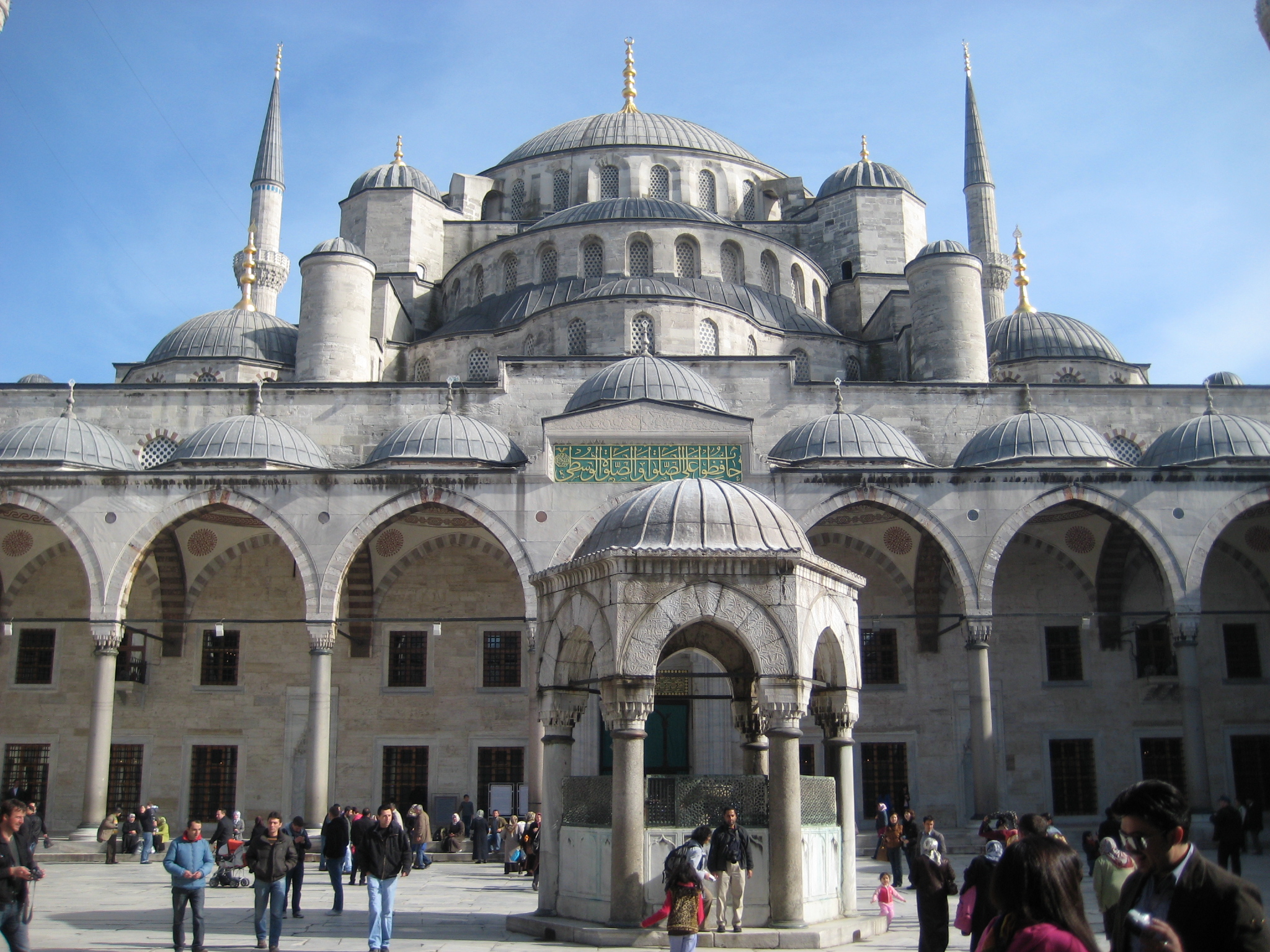
The Sultan Ahmed Mosque, also known as the Blue Mosque due to its blue tiles, is one of the most significant landmarks of Istanbul. It’s known for its six minarets, an unusual feature as most mosques typically have two or four. The interior is a spectacle of thousands of beautiful blue tiles, stained glass windows, and Arabic inscriptions.
The mosque still serves as a place of worship today, but visitors are welcomed outside during prayer times. Its lush carpet, towering columns, and cascading domes leave a lasting impression on anyone who steps inside.
6) Istanbul Archaeological Museum Complex
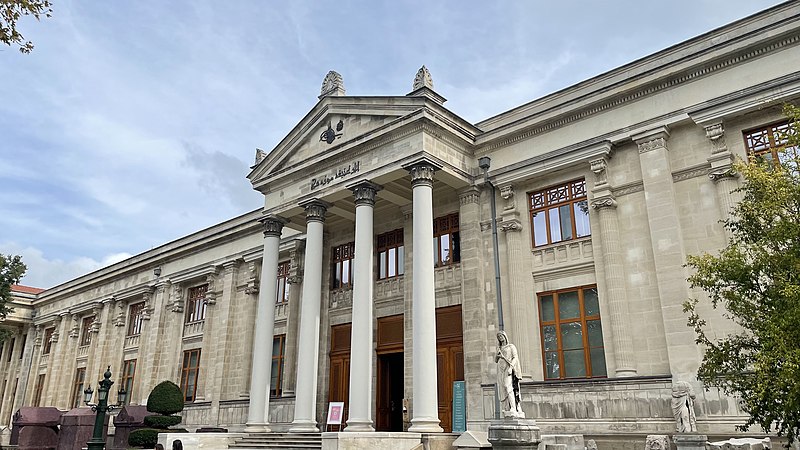
The Istanbul Archaeological Museum Complex consists of three different museums: the Archaeological Museum, the Museum of the Ancient Orient, and the Tiled Kiosk Museum. With artifacts from all corners of the empire, it’s a treasure trove for those interested in history and archaeology. From Sumerian tablets to Greek statues, every exhibit tells a piece of the rich, diverse tapestry of Istanbul’s past.
7) The Grand Bazaar
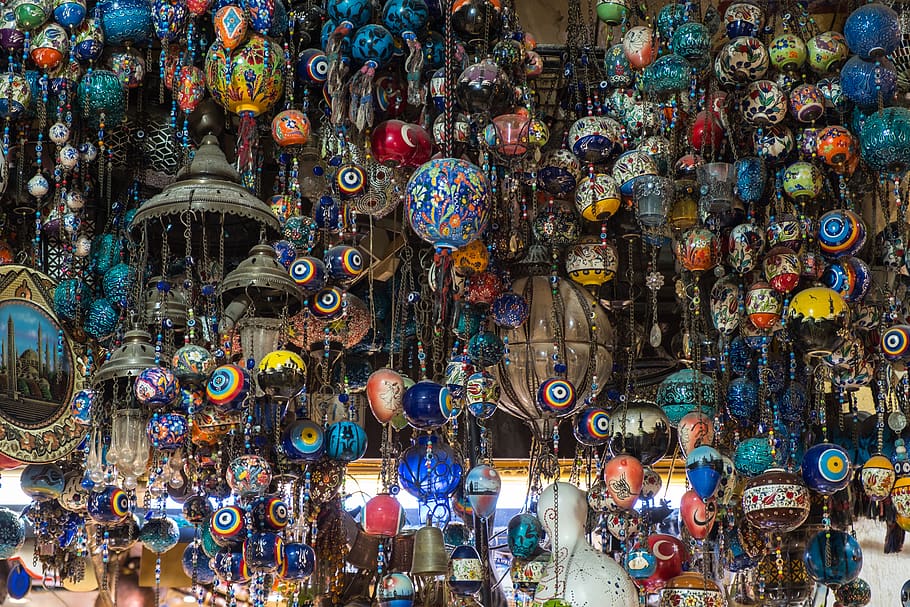
The Grand Bazaar in Istanbul is one of the largest and oldest covered markets in the world. With over 60 streets and thousands of shops, it’s a vibrant, colorful maze where you can find everything from handcrafted carpets to gold jewelry. But the Grand Bazaar is not just about shopping – it’s a feast for the senses, with the aroma of spices, the sound of sellers hawking their wares, and the bustle of the crowd. Every visit is a unique experience.
8) Spice Bazaar (Egyptian Bazaar)
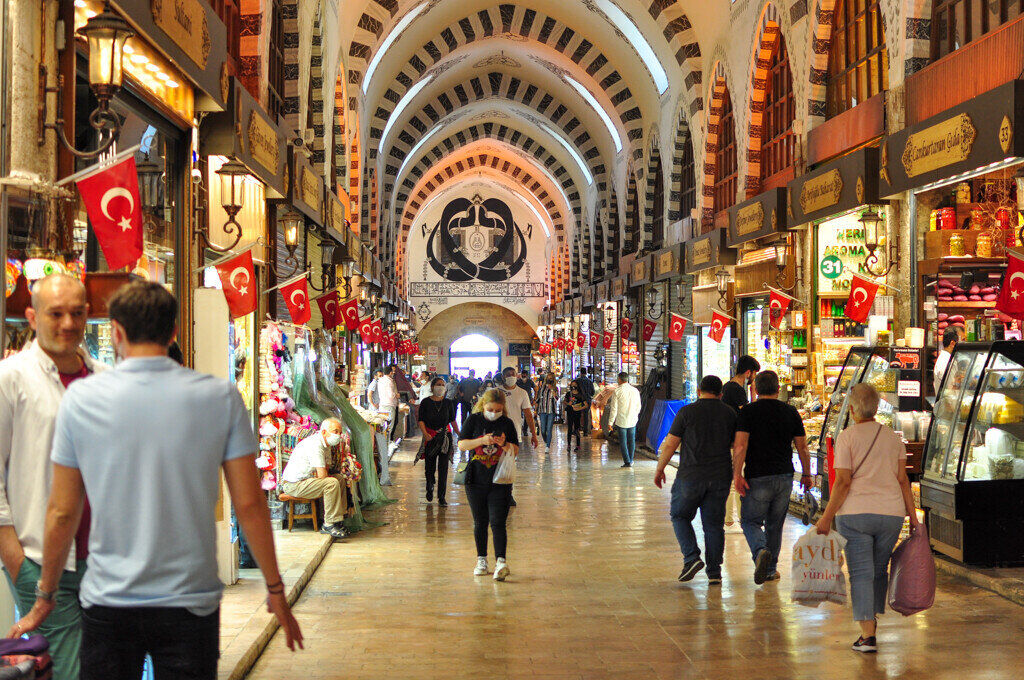
The Spice Bazaar, or Egyptian Bazaar, is another famous market in Istanbul, smaller than the Grand Bazaar but no less fascinating. It’s the best place to discover the flavors and aromas of Turkey, from colorful spices to a variety of teas, nuts, dried fruits, and Turkish delight. Walking through its vibrant lanes is an unforgettable experience that engages all your senses.
Frequently Asked Questions
Is it safe in Sultanahmet Istanbul?
Yes, Sultanahmet is generally considered safe for both residents and tourists. Like in any major city, it’s wise to remain vigilant, especially in crowded areas, and take standard safety precautions such as not displaying valuable items openly. The area is well-policed and frequented by tourists. That said, always stay aware of your surroundings, especially during the evening hours or when in less crowded areas.
Which side of Istanbul is Sultanahmet?
The Sultanahmet neighborhood is located on the European side of Istanbul. It’s part of the historic district, often referred to as the “Old City,” where many of the city’s most famous landmarks, including the Hagia Sophia, Blue Mosque, and Topkapi Palace, are found. Sultanahmet is located south of the Golden Horn and northwest of the Sea of Marmara.
Why is it called Sultanahmet?
The area is named after Sultan Ahmed I, the Ottoman ruler who commissioned the building of the Sultan Ahmed Mosque, also known as the Blue Mosque, one of Istanbul’s most iconic landmarks. “Sultanahmet” translates to “Sultan Ahmed” in Turkish. Over time, the name of the mosque has been used to refer to the whole surrounding neighborhood due to its prominence and significance.
Where to stay in Sultanahmet?
Also recommended: How to get from Istanbul Airport to Sultanahmet

